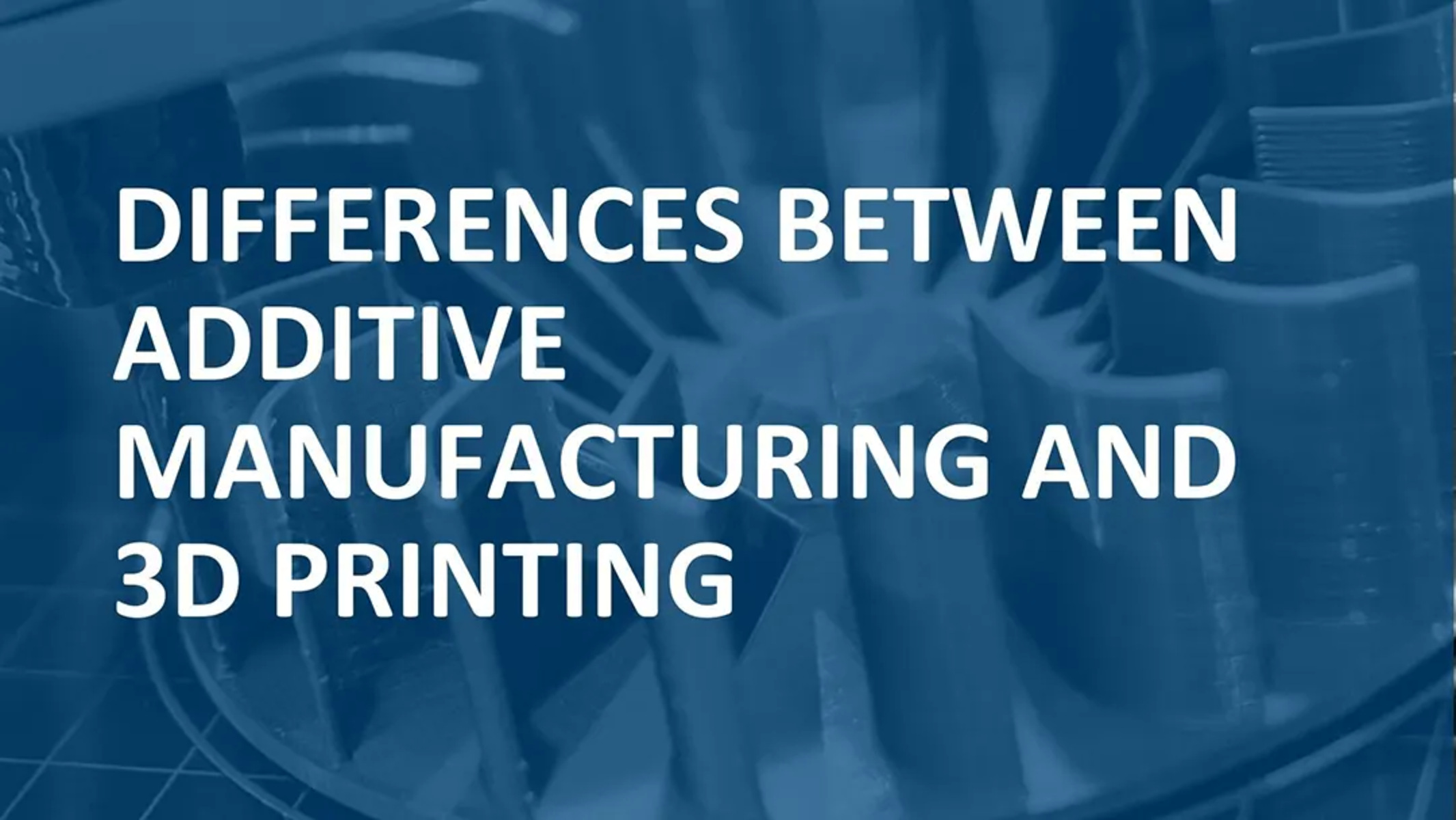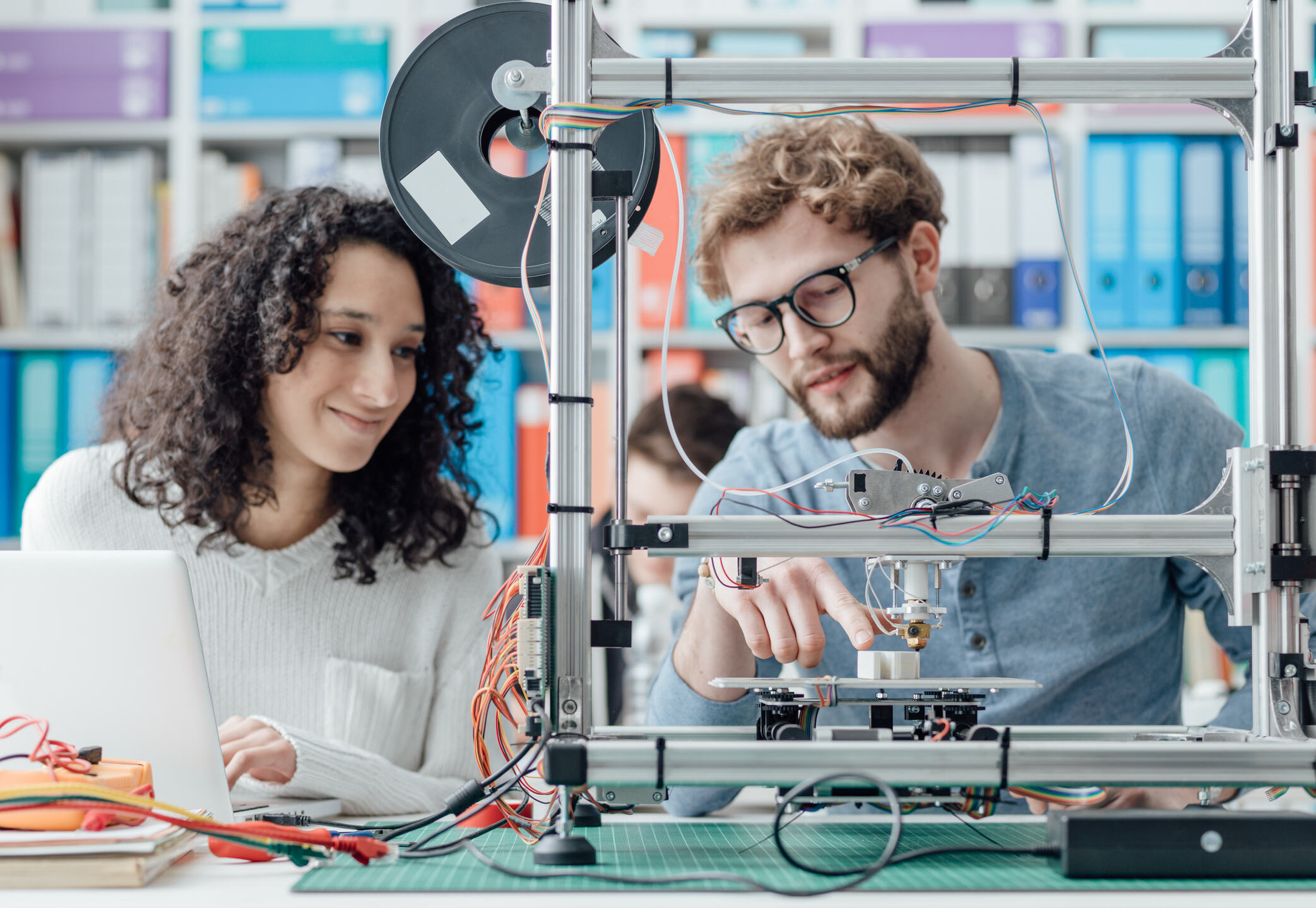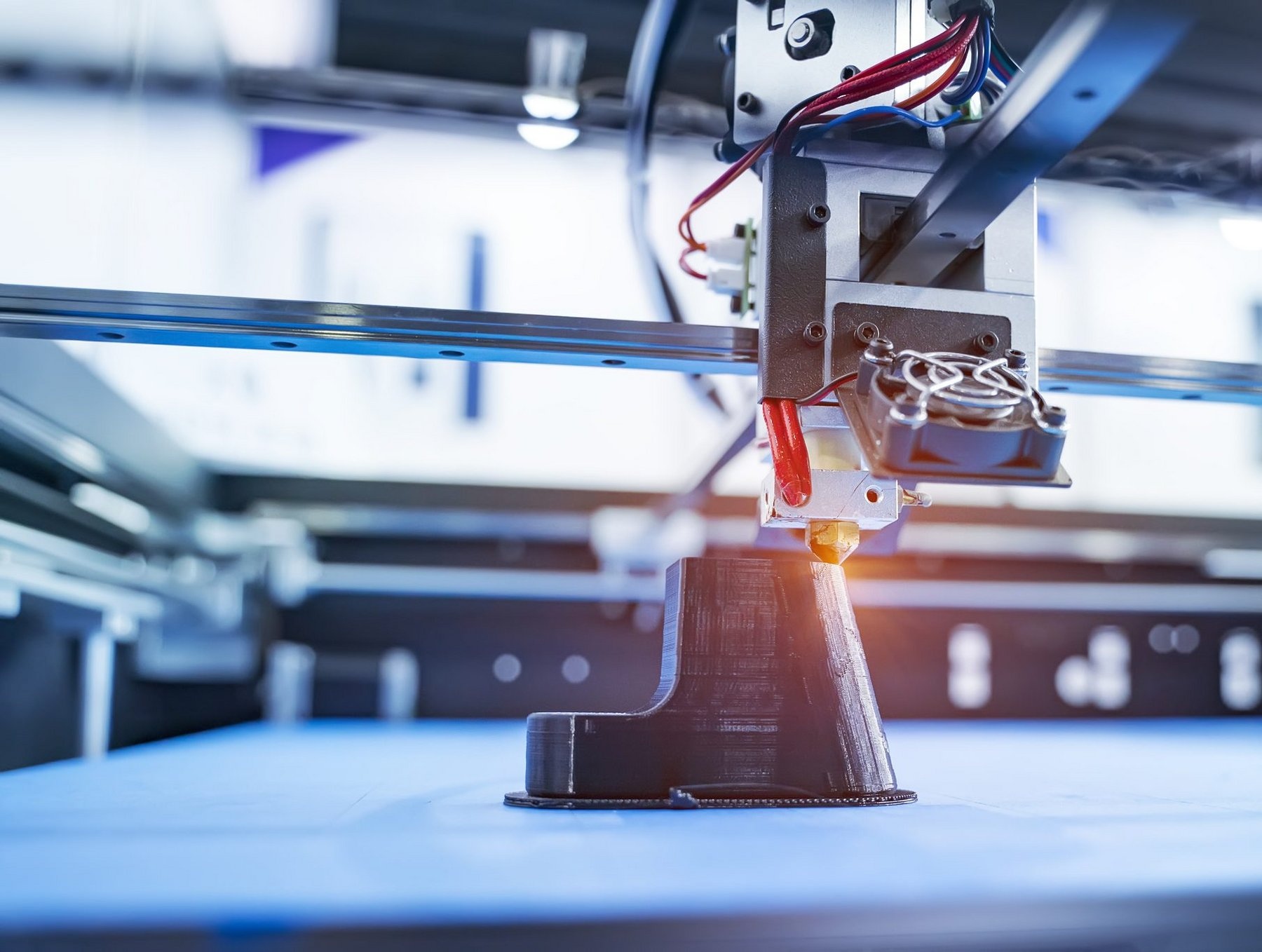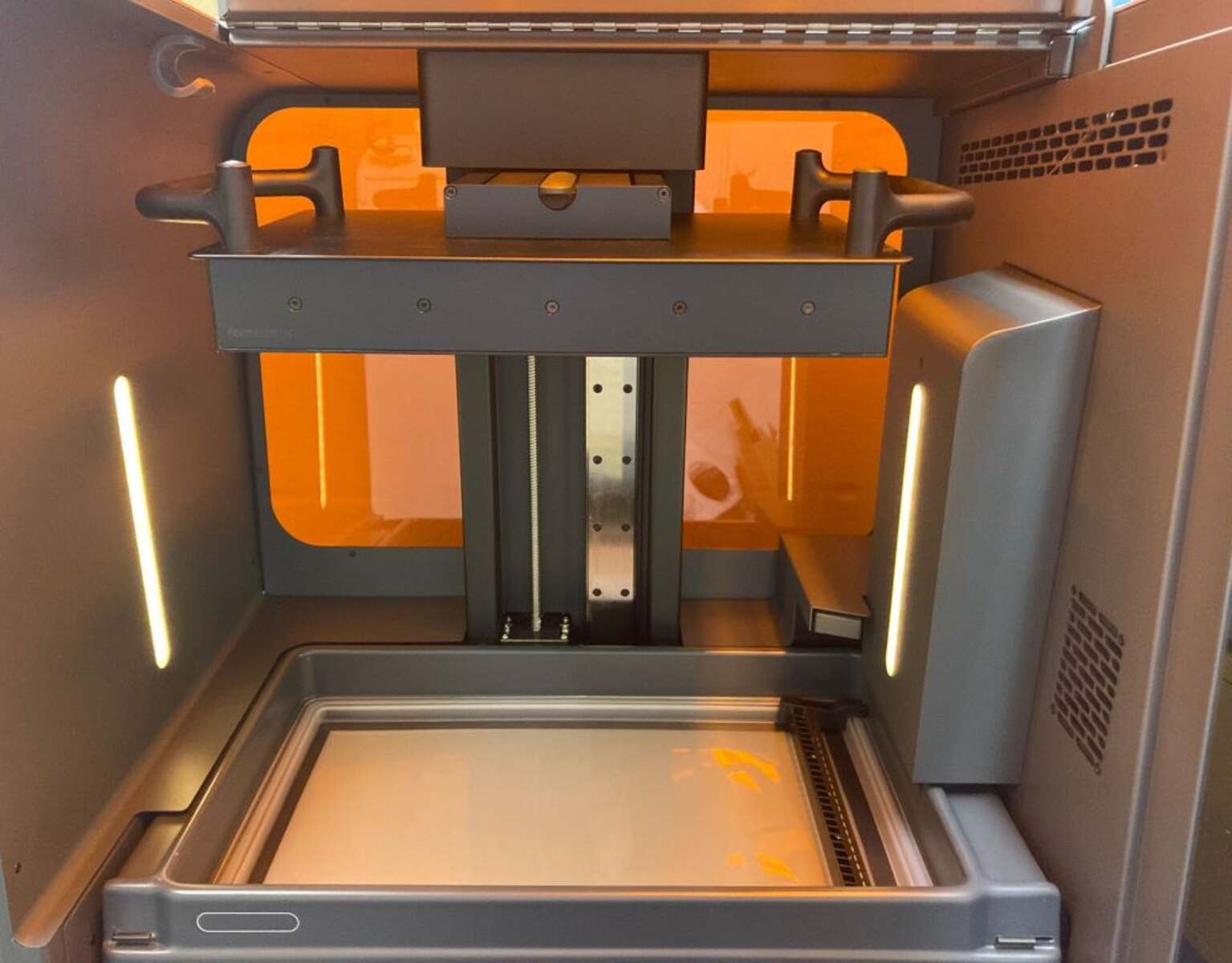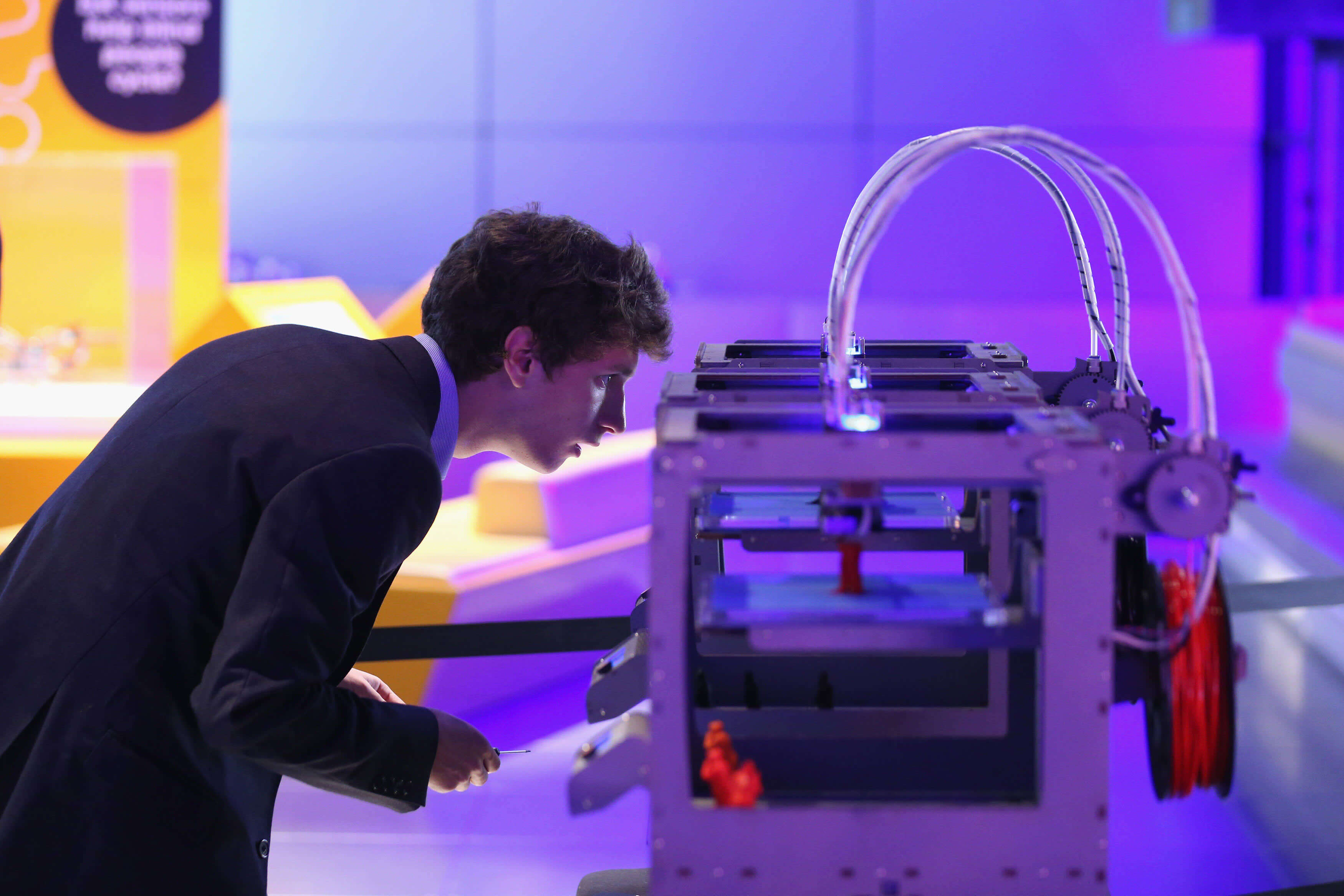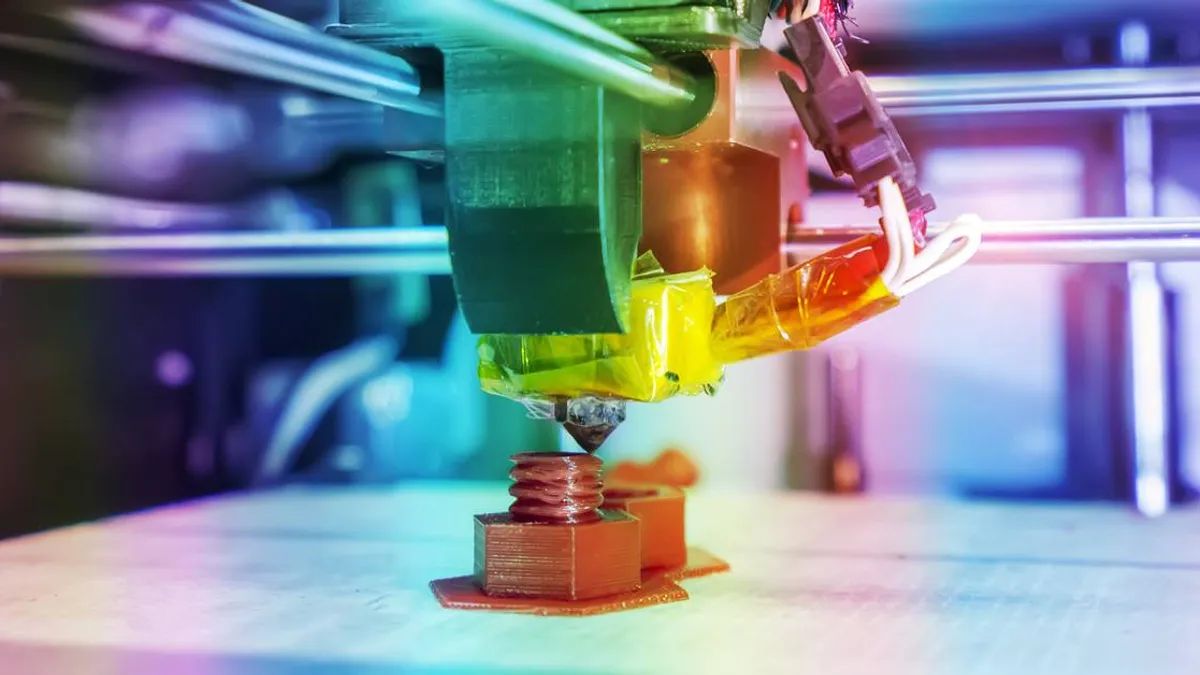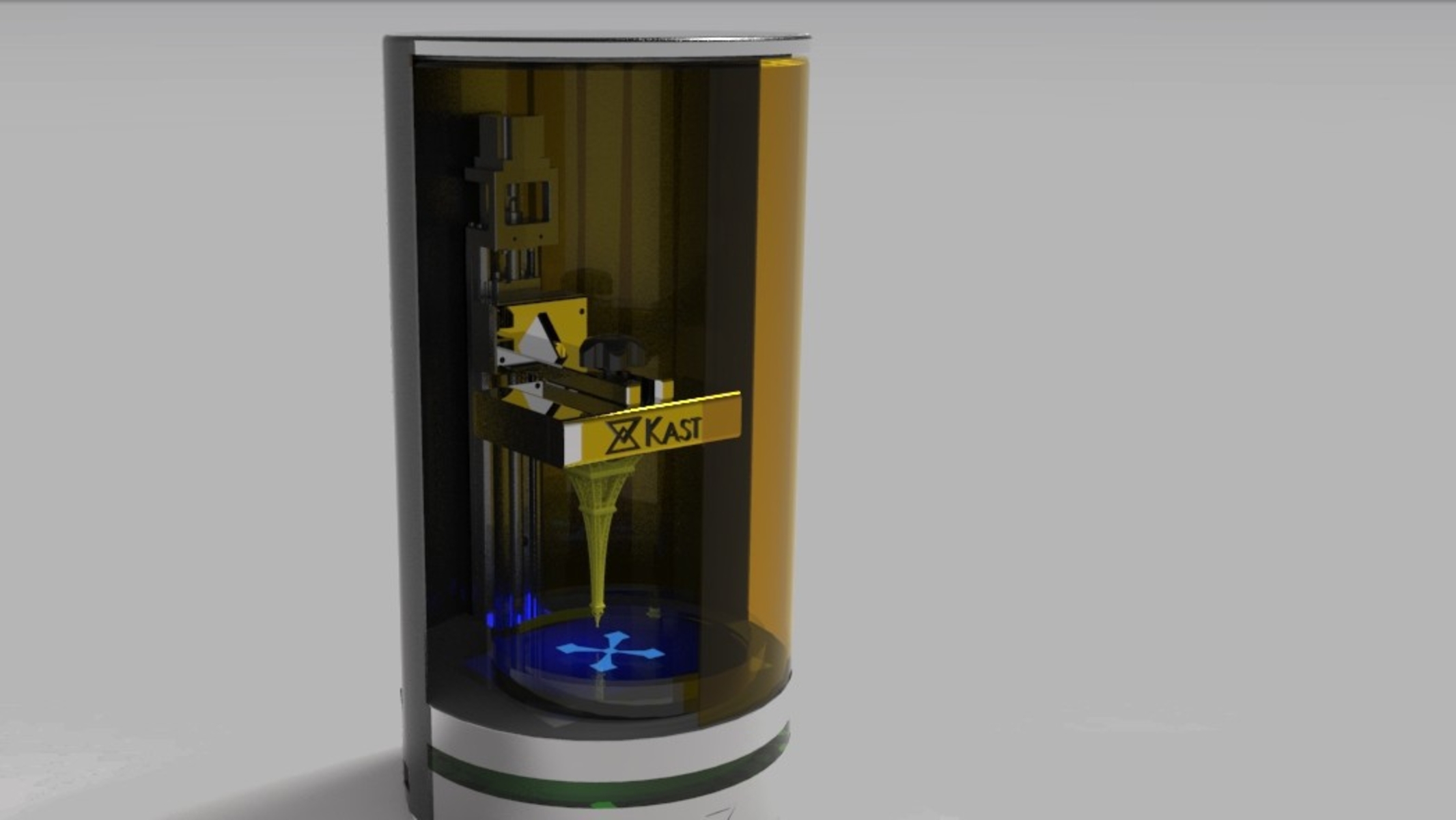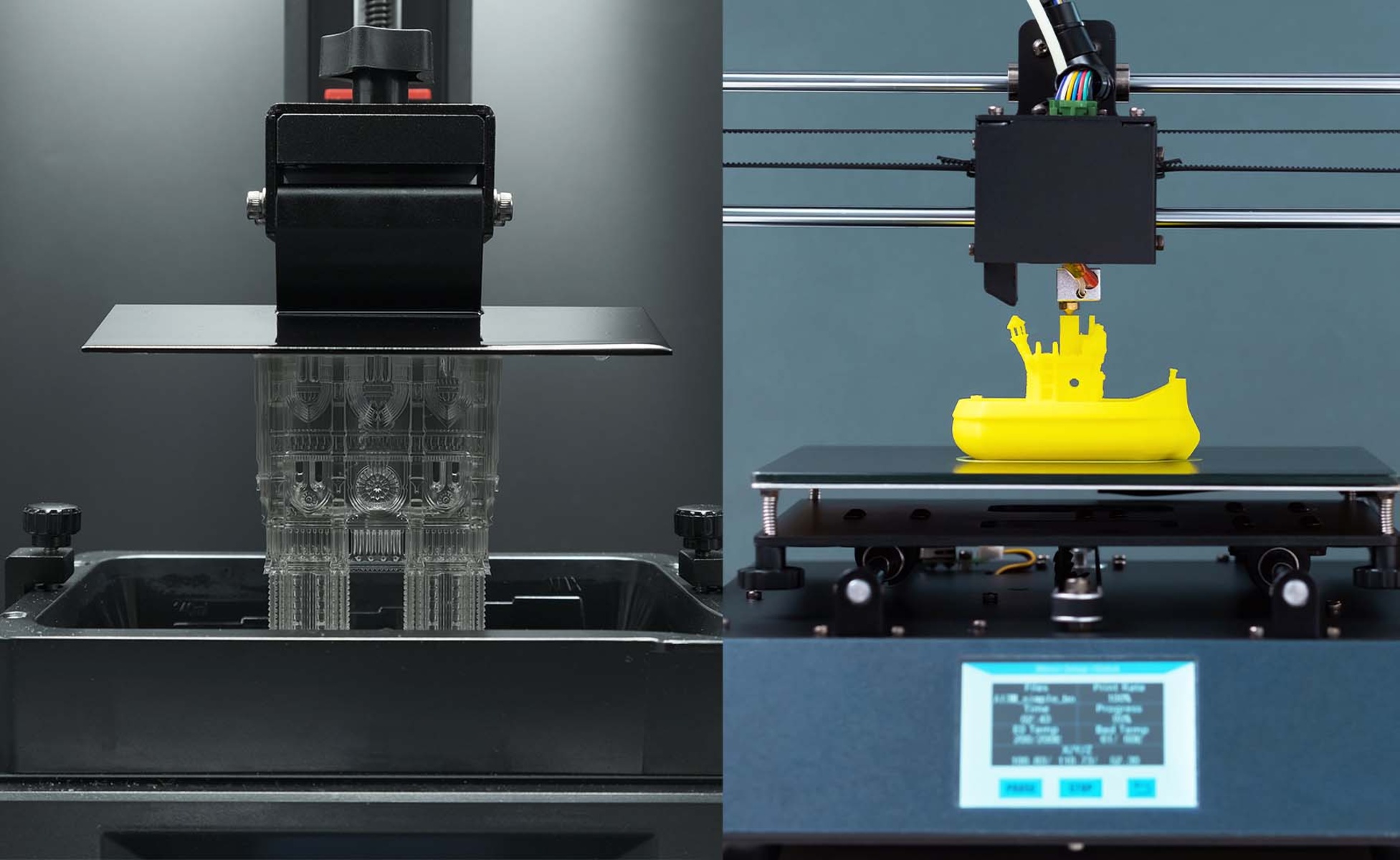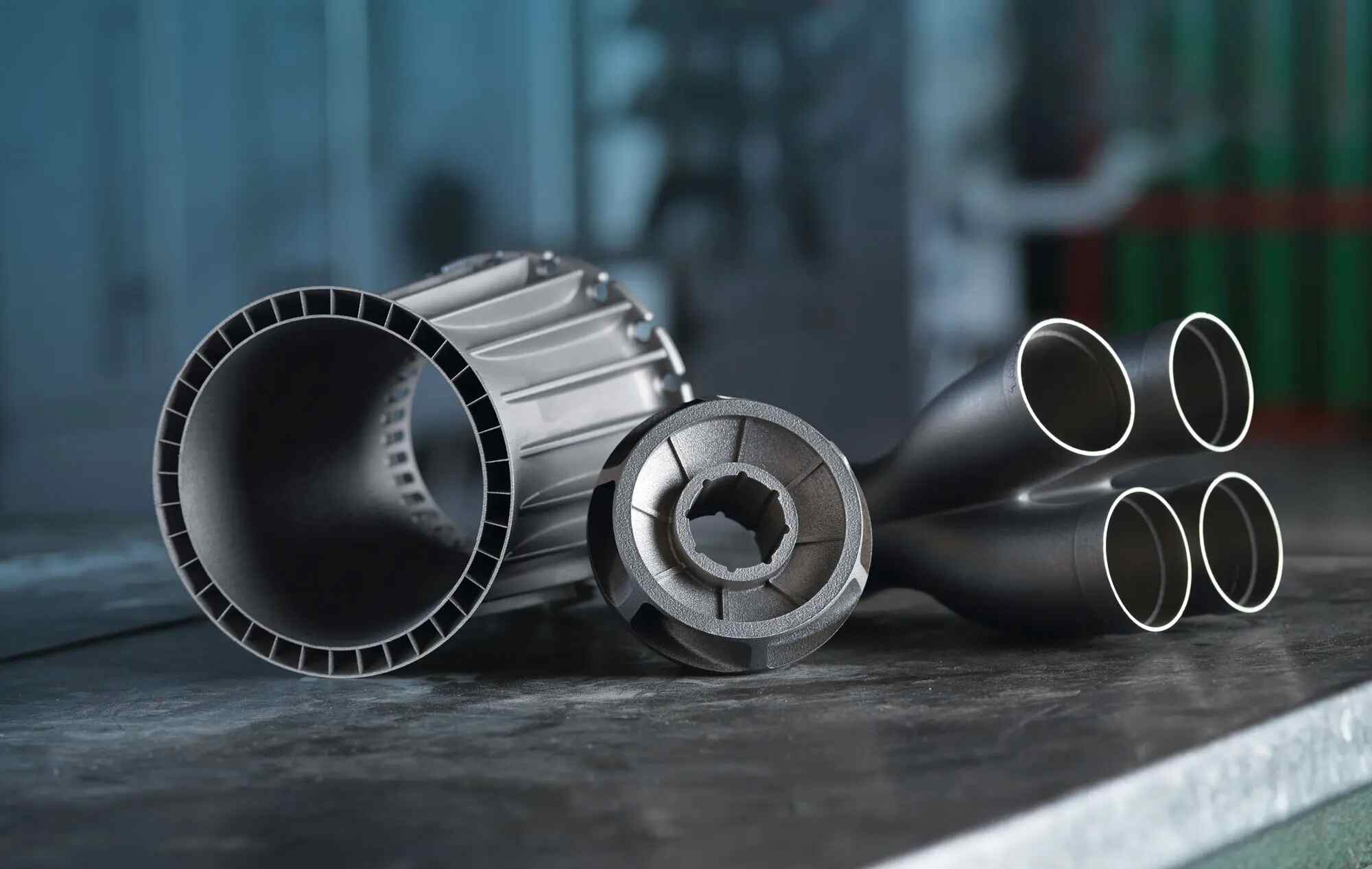Introduction
Welcome to the fascinating world of 3D printing and additive manufacturing! These innovative technologies have revolutionized the way we create and manufacture objects. In this article, we will explore the concept of 3D printing and additive manufacturing, understand their differences, and uncover their applications and advantages.
3D printing, also known as additive manufacturing, is a process of creating three-dimensional objects by layering materials in a sequential manner. It is a groundbreaking technology that enables the transformation of digital designs into physical prototypes or end-use products with unprecedented precision and efficiency.
Additive manufacturing, on the other hand, is a broader term that encompasses various techniques, including 3D printing. It refers to the process of creating objects by adding material layer by layer, unlike traditional subtractive manufacturing methods that involve cutting or shaping a material to obtain the desired form.
The history of 3D printing and additive manufacturing dates back several decades. It originated as a rapid prototyping technique in the 1980s but has since evolved into a multifaceted technology with numerous applications across industries such as aerospace, healthcare, automotive, and consumer goods.
The basic principle behind both 3D printing and additive manufacturing is the layer-by-layer deposition of materials. A digital design is first created using computer-aided design (CAD) software, which is then translated into machine-readable instructions for the 3D printer or additive manufacturing system.
Different materials can be used for 3D printing and additive manufacturing, depending on the specific requirements of the object being produced. Common materials include plastics, metals, ceramics, and even living tissue for bio-printing applications.
These technologies have revolutionized various industries by enabling faster production, reducing costs, and allowing for complex and customized designs that were once impossible to achieve. From rapid prototyping and product development to custom prosthetics and personalized jewelry, the applications of 3D printing and additive manufacturing are vast and ever-expanding.
Advantages of 3D printing and additive manufacturing include the ability to create intricate geometries, reduce material waste, and facilitate on-demand production. These technologies offer unparalleled flexibility and customization options, allowing manufacturers to optimize design and manufacturing processes.
However, like any technology, there are limitations to 3D printing and additive manufacturing. These include slower production speeds compared to traditional mass production methods, limited material options for certain applications, and the need for skilled operators and equipment maintenance.
In the following sections, we will delve deeper into the advantages, limitations, and specific applications of both 3D printing and additive manufacturing. So, let’s embark on this journey to explore these groundbreaking technologies and discover their immense potential.
Definition of 3D Printing
3D printing, also known as additive manufacturing, is a cutting-edge process that involves the creation of three-dimensional objects by layering materials in a sequential manner. This revolutionary technology allows for the transformation of digital designs into physical objects with remarkable precision and complexity.
The process of 3D printing begins with a digital model or design created using computer-aided design (CAD) software. The digital design is then sliced into thin cross-sectional layers, which are fed into the 3D printer. The printer interprets these layers as a series of instructions and proceeds to build the object layer by layer, using a variety of materials.
There are several types of 3D printing technologies or processes, each with its own unique characteristics and applications. One common method is fused deposition modeling (FDM), where a filament of thermoplastic material is melted and extruded through a nozzle. The molten material is then precisely deposited and solidified layer by layer to create the final object.
Another popular 3D printing technique is stereolithography (SLA), which utilizes a liquid resin that is selectively cured by an ultraviolet (UV) laser. The laser scans and solidifies the resin layer by layer, gradually building the object from the bottom up.
Other 3D printing methods include selective laser sintering (SLS), where a laser sinters powdered materials, such as metals or plastics, together to form the object, and digital light processing (DLP), which involves using a projector to cure the liquid resin layer by layer.
3D printing has gained immense popularity due to its ability to create objects with intricate geometries and complex internal structures. It allows for the production of highly customized and personalized physical artifacts that would be difficult or time-consuming to make using traditional manufacturing methods.
The materials used in 3D printing vary depending on the specific requirements of the object being produced. Common materials include thermoplastics, such as acrylonitrile butadiene styrene (ABS) and polylactic acid (PLA), as well as metals, ceramics, and composite materials. There are also specialized filaments available, such as conductive filaments or flexible materials, to cater to specific applications.
While 3D printing offers numerous advantages, such as rapid prototyping, on-demand production, and cost-effectiveness for small batch production, it does have its limitations. These include the limited size and resolution of printed objects, the need for post-processing and finishing, and the constraints of material properties and compatibility with printing technologies.
Despite these limitations, 3D printing continues to expand its applications across various industries, including aerospace, healthcare, automotive, consumer goods, and even food. It has the potential to revolutionize manufacturing processes, enabling greater innovation, customization, and efficiency.
In the next section, we will explore the definition and characteristics of additive manufacturing, which encompasses 3D printing and other related techniques.
Definition of Additive Manufacturing
Additive manufacturing is a broader term that encompasses various technologies, including 3D printing. It is a process of creating objects by adding materials layer by layer, unlike traditional subtractive manufacturing methods that involve cutting or shaping a material to obtain the desired form.
Unlike conventional manufacturing techniques, additive manufacturing allows for the production of highly complex and intricate geometries with a high degree of accuracy and precision. It offers unparalleled design freedom and customization options, making it a versatile technology with applications in diverse fields.
The core principle of additive manufacturing is to build objects layer by layer. This is achieved by translating a digital design into machine-readable instructions that guide the additive manufacturing system. The system then follows these instructions to deposit material, solidify it, or fuse it together, creating the final object.
There are various additive manufacturing processes available, each suited for different materials and applications. Some of the commonly used methods include fused deposition modeling (FDM), stereolithography (SLA), selective laser sintering (SLS), and digital light processing (DLP).
One distinctive feature of additive manufacturing is its ability to utilize a wide range of materials. These materials can include plastics, metals, ceramics, composite materials, and even living tissue for bio-printing applications. The choice of material depends on the specific requirements of the object being produced, such as strength, durability, or heat resistance.
Additive manufacturing offers numerous advantages over traditional manufacturing methods. It enables faster prototyping and product development, reduces material waste, and provides greater design flexibility. This technology allows for the creation of complex and intricate structures that would be difficult or impossible to produce using conventional manufacturing techniques.
Despite its benefits, additive manufacturing does have some limitations. These include slower production speeds compared to traditional mass production methods, limited material options for certain applications, and the need for skilled operators and equipment maintenance. Additionally, the size and resolution of printed objects may be limited by the capabilities of the additive manufacturing system.
In summary, additive manufacturing is a transformative technology that revolutionizes the production process by adding materials layer by layer to create three-dimensional objects. It offers unprecedented design freedom, customization options, and the ability to create complex and intricate structures. By expanding the possibilities of manufacturing, additive manufacturing has the potential to drive innovation and reshape various industries.
History
The history of 3D printing and additive manufacturing can be traced back several decades, with the earliest developments beginning in the 1980s. The roots of these technologies lie in the field of rapid prototyping, which aimed to streamline the product development process by creating physical models directly from digital designs.
In 1981, Hideo Kodama, a Japanese researcher, filed a patent for a system that used photopolymerization to build models layer by layer. However, his work did not receive much attention at the time.
It wasn’t until 1984 that Chuck Hull, an American engineer, invented and patented a process called stereolithography (SLA). This technique involved using a liquid resin that could be selectively cured by an ultraviolet (UV) laser to create solid objects layer by layer. This breakthrough marked the beginning of the additive manufacturing revolution.
As the technology advanced, new additive manufacturing processes were developed. In the late 1980s, Carl Deckard and Joe Beaman at the University of Texas at Austin invented selective laser sintering (SLS). This technique used a high-powered laser to selectively fuse powdered materials, such as plastics or metals, into solid objects.
Throughout the 1990s, further advancements were made in the field of 3D printing and additive manufacturing. Companies like 3D Systems and Stratasys emerged as pioneers in the industry, introducing new technologies and materials.
Over the years, additive manufacturing has expanded its reach beyond rapid prototyping. It has found applications in various industries, including aerospace, healthcare, automotive, and consumer goods.
The aerospace industry was quick to adopt additive manufacturing techniques due to their ability to create lightweight and complex geometries. The use of 3D-printed components in aircraft has contributed to improved fuel efficiency and reduced manufacturing and assembly costs.
In the healthcare sector, additive manufacturing has been transformative. It has enabled the production of custom prosthetics, dental implants, and patient-specific surgical guides. Medical researchers are also exploring the potential of bio-printing, which uses living cells as the printing material to create tissues and organs.
As additive manufacturing technologies became more accessible and affordable, the maker movement gained momentum. Makerspaces and Fab Labs began to emerge, providing individuals with the tools and resources to experiment with 3D printing and create their own objects.
Today, additive manufacturing continues to evolve, with advancements in materials, technologies, and applications. It has the potential to disrupt traditional manufacturing processes, enabling greater customization, cost-effectiveness for small batch production, and the democratization of manufacturing.
In the next sections, we will explore the basic principles, materials used, applications, advantages, and limitations of 3D printing and additive manufacturing, delving deeper into the fascinating world of these groundbreaking technologies.
Basic Principles
3D printing and additive manufacturing are based on the fundamental principle of building objects layer by layer. Both processes involve the conversion of a digital design, created using computer-aided design (CAD) software or obtained through 3D scanning, into physical objects.
In 3D printing, the digital design is sliced into thin cross-sectional layers using specialized software. These layers are then sequentially interpreted by the 3D printer, which follows the instructions to deposit or solidify the material and build the object from the bottom up.
There are various types of 3D printing technologies, each employing its own mechanism for layering and building objects. Common technologies include fused deposition modeling (FDM), stereolithography (SLA), selective laser sintering (SLS), and digital light processing (DLP).
In FDM, a filament of thermoplastic material is fed into an extrusion nozzle, which heats and melts the filament. The molten material is then precisely deposited layer by layer onto a build platform, where it cools and solidifies to form the final object.
SLA utilizes a liquid resin that is cured by an ultraviolet (UV) laser. The laser traces the shape of each layer, selectively curing the liquid resin and solidifying it to build the object.
SLS involves the use of a high-powered laser that sinters powdered materials, such as plastics or metals, together to create the object. The laser selectively heats and fuses the powder particles, layer by layer, until the entire object is formed.
DLP technology uses a digital light projector to selectively cure a liquid resin in a process similar to SLA. However, instead of using a laser, a projected image of each layer is cast onto the liquid resin, curing it layer by layer to create the object.
Regardless of the specific technology, the layer-by-layer approach of 3D printing and additive manufacturing allows for the production of objects with intricate geometries and complex internal structures. This level of detail and customization is not easily achievable using traditional manufacturing methods.
The choice of materials in 3D printing and additive manufacturing depends on the desired properties and characteristics of the object being produced. Common materials include thermoplastics, such as acrylonitrile butadiene styrene (ABS) and polylactic acid (PLA), as well as metals, ceramics, and composite materials.
Moreover, advancements in material science have led to the development of specialized filaments with unique properties, such as conductive filaments for electrical applications or flexible materials for creating rubber-like objects.
In summary, the basic principles of 3D printing and additive manufacturing involve layer-by-layer construction of objects based on digital designs. The process utilizes various technologies and materials to transform virtual models into physical realities, enabling the creation of highly intricate and customized objects.
In the upcoming sections, we will explore the applications, advantages, and limitations of 3D printing and additive manufacturing, gaining a deeper understanding of how these technologies are reshaping industries and driving innovation.
Materials Used
3D printing and additive manufacturing utilize a wide range of materials to create objects with varying properties and characteristics. The choice of material depends on the specific requirements of the object being produced, such as strength, durability, temperature resistance, and conductivity.
One commonly used material in 3D printing and additive manufacturing is thermoplastics. Thermoplastics offer a balance between affordability, ease of use, and versatility. Examples of thermoplastics used in 3D printing include acrylonitrile butadiene styrene (ABS), polylactic acid (PLA), polyethylene terephthalate (PET), and polypropylene (PP). These materials are widely available and offer different properties, such as strength, flexibility, and heat resistance.
In addition to thermoplastics, additive manufacturing also encompasses the use of metals. Metal 3D printing has gained significant attention in recent years due to its potential for creating complex metal components with precise geometries. Metals such as titanium, aluminum, stainless steel, and cobalt-chrome alloys are commonly used in metal additive manufacturing processes such as selective laser melting (SLM) and electron beam melting (EBM).
Ceramics are another category of materials used in additive manufacturing. Ceramic 3D printing enables the production of objects with high thermal stability, electrical insulation, and biocompatibility. Materials like alumina, zirconia, and porcelain can be utilized for applications in the aerospace, dental, and medical industries.
Composite materials can also be employed in additive manufacturing. Composites are created by combining two or more materials with different properties to generate a new material with improved characteristics. For example, carbon fiber-reinforced thermoplastics are utilized to produce lightweight, high-strength parts with excellent stiffness and impact resistance.
Furthermore, advancements in material science have led to the development of specialized filaments for specific applications. For instance, conductive filaments containing additives like carbon or graphene allow for the 3D printing of functional electrical components. Flexible filaments made of thermoplastic elastomers enable the creation of rubber-like objects with varying levels of flexibility and elasticity.
Other materials used in 3D printing and additive manufacturing include bio-compatible polymers for medical applications, photopolymers for high-resolution resin-based printing, and even living cells for bio-printing tissues and organs.
Each material has its own unique set of properties and limitations, and the selection of materials depends on factors such as the intended application, desired characteristics of the printed object, and the capabilities of the specific additive manufacturing technology being used.
In summary, 3D printing and additive manufacturing employ a wide range of materials, including thermoplastics, metals, ceramics, and composite materials. The versatility of these materials allows for the creation of objects with diverse properties, enabling innovative applications across industries.
In the following sections, we will explore the applications, advantages, and limitations of 3D printing and additive manufacturing, providing a deeper insight into how these technologies are transforming the manufacturing landscape.
Applications
3D printing and additive manufacturing have revolutionized various industries by offering new possibilities for design, customization, and production. The applications of these technologies span across multiple sectors, including aerospace, healthcare, automotive, consumer goods, architecture, and more.
The aerospace industry has embraced additive manufacturing for prototyping, functional testing, and production. 3D printing allows for the creation of lightweight and complex components, reducing the weight of aircraft and improving fuel efficiency. It also enables the production of parts with intricate geometries and internal structures, impossible to achieve with traditional manufacturing methods.
In the healthcare sector, additive manufacturing has had a transformative impact. The creation of custom-made prosthetics, orthotics, and implants has been made possible through 3D printing. Patient-specific models and surgical guides are printed for surgical planning and training purposes. Additionally, bio-printing using living cells holds promise for the creation of artificial organs and tissues.
The automotive industry utilizes additive manufacturing for rapid prototyping, concept design, and the production of customized parts. 3D printing allows for faster iteration cycles during the design stage and enables the creation of unique and personalized components. Additionally, additive manufacturing is used in the production of tooling and jigs, improving efficiency and reducing costs.
Additive manufacturing finds applications in the consumer goods industry as well. From customized jewelry and fashion accessories to unique home decor items, 3D printing allows for the creation of one-of-a-kind products. It enables artists, designers, and entrepreneurs to bring their creative ideas to life quickly and cost-effectively.
In architecture and construction, the use of additive manufacturing is emerging as a game-changer. Large-scale 3D printers can create intricate architectural models, building components, and even entire houses. Additive manufacturing in construction holds great potential for reducing construction waste, increasing design possibilities, and accommodating complex geometries.
Other applications of 3D printing and additive manufacturing include tooling, molds, and fixtures for manufacturing processes. These technologies enable the production of customized and complex designs, optimizing manufacturing operations. Additionally, educational institutions utilize 3D printing to enhance STEM education, allowing students to bring their ideas and concepts to life.
As technology advances and new materials are developed, the range of applications for 3D printing and additive manufacturing continues to expand. From aerospace to healthcare, automotive to consumer goods, these technologies are transforming industries, driving innovation, and shaping the future of manufacturing.
In the following sections, we will explore the advantages and limitations of 3D printing and additive manufacturing, providing a comprehensive overview of their capabilities and considerations.
Advantages of 3D Printing
3D printing offers numerous advantages that have made it a game-changer in various industries. From rapid prototyping to on-demand production, the benefits of 3D printing are driving innovation and transforming manufacturing processes.
One of the key advantages of 3D printing is the ability to create highly complex and intricate geometries. Traditional manufacturing methods often have limitations in terms of design and production capabilities. With 3D printing, complex shapes, internal cavities, and intricate details can be easily achieved, opening up new possibilities for design and innovation.
Another advantage of 3D printing is the reduction of material waste. Traditional manufacturing processes often involve subtractive methods, where excess material is removed to obtain the desired shape. This can result in significant material wastage. In contrast, 3D printing is an additive process, only using the necessary amount of material to build the object, minimizing waste and optimizing material usage.
3D printing also enables cost-effective small-batch production. Traditional manufacturing methods often require expensive tooling and setup costs for each production run. This makes small-batch or custom production economically prohibitive. However, with 3D printing, there is no need for extensive tooling or setup. Objects can be printed as needed, allowing for cost-effective production of small quantities or even one-off custom items.
Customizability is another significant advantage of 3D printing. It allows for the production of highly personalized and customized objects. Through 3D printing, individual designs can be easily translated into physical objects, enabling mass customization and catering to individual needs and preferences. This level of customization is not feasible or cost-effective with traditional manufacturing methods.
Rapid prototyping is another area where 3D printing excels. In traditional manufacturing, creating prototypes can be time-consuming and costly. With 3D printing, prototypes can be quickly and easily produced. This enables rapid iteration and design refinement, speeding up the product development process and reducing time to market.
Additive manufacturing also offers great design freedom. Unlike traditional manufacturing methods, which often have design limitations and constraints, 3D printing allows for the creation of objects with intricate shapes and internal structures. This design freedom opens up new opportunities for engineers, designers, and artists to explore innovative designs and push the boundaries of what is possible.
Furthermore, 3D printing enables decentralized production and localized manufacturing. By eliminating the need for mass production and centralized manufacturing facilities, 3D printing provides the opportunity to produce items on-site or closer to the point of use. This can reduce transportation costs and carbon footprint, making the production process more sustainable and environmentally friendly.
In summary, 3D printing offers numerous advantages, including the ability to create complex geometries, reduce material waste, enable cost-effective small-batch production, provide customization options, facilitate rapid prototyping, offer design freedom, and support localized manufacturing. These advantages are driving the adoption of 3D printing across industries, revolutionizing manufacturing processes, and fueling innovation.
In the next section, we will explore the advantages of additive manufacturing, examining how it goes beyond 3D printing and expands the possibilities of production.
Advantages of Additive Manufacturing
Additive manufacturing, which encompasses 3D printing and other related techniques, offers numerous advantages that go beyond traditional manufacturing methods. These advantages have positioned additive manufacturing as a transformative technology in various industries. Let’s explore some of the key advantages:
Design Freedom: Additive manufacturing provides unparalleled design freedom, allowing for the creation of highly complex and intricate geometries. Unlike traditional manufacturing methods that have design limitations and constraints, additive manufacturing enables the production of objects with organic shapes, internal channels, and intricate lattice structures. This design freedom opens up new opportunities for innovative and creative designs.
Customization: Additive manufacturing enables customization options with ease. It allows for the production of personalized and tailor-made products to meet individual needs and preferences. From customized jewelry and fashion accessories to personalized medical implants and prosthetics, additive manufacturing revolutionizes the concept of mass customization and brings products closer to the unique requirements of individuals.
Complexity and Integration: Additive manufacturing enables the integration of multiple parts and components into a single printed object, reducing the need for assembly and simplifying the manufacturing process. Complex assemblies can be consolidated into one printed piece, eliminating the need for separate components, fasteners, and assembly operations. This leads to reduced manufacturing time, lower costs, and improved product reliability.
Reduced Material Waste: Additive manufacturing is an additive process, meaning it uses only the necessary amount of material to create the object. Unlike traditional manufacturing methods that involve subtractive processes, which result in a significant amount of wasted material, additive manufacturing minimizes waste and optimizes material usage. This reduction in material waste contributes to cost savings and environmental sustainability.
Prototyping and Iteration: Additive manufacturing is widely used for rapid prototyping and iterative design processes. It allows for the quick and cost-effective production of physical prototypes, enabling designers and engineers to validate and iterate their designs before moving to full-scale production. Rapid prototyping with additive manufacturing reduces lead times, accelerates product development cycles, and enhances design refinement.
On-Demand Production: Additive manufacturing enables on-demand production, where items can be manufactured as needed, eliminating the need for large inventories and excessive production. This just-in-time manufacturing approach reduces storage costs, minimizes inventory risk, and enables a more flexible and responsive production process. It also facilitates decentralized production and localized manufacturing, bringing production closer to the end-user and potentially reducing transportation and logistics costs.
Complex Material Capabilities: Additive manufacturing techniques are not limited to a single material. The technology allows for the use of a wide range of materials, including polymers, metals, ceramics, composites, and even living cells. This versatility enables the production of objects with a diverse set of properties, such as strength, flexibility, conductivity, and biocompatibility, opening up new opportunities in various industries.
In summary, additive manufacturing offers several advantages such as design freedom, customization options, complexity and integration capabilities, reduced material waste, rapid prototyping, on-demand production, and the ability to work with a wide range of materials. These advantages are transforming industries and disrupting traditional manufacturing paradigms, offering new possibilities for design, production, and supply chain efficiency.
In the next sections, we will explore the limitations and considerations associated with both 3D printing and additive manufacturing, providing a comprehensive understanding of the technology’s capabilities and challenges.
Limitations of 3D Printing
While 3D printing offers numerous advantages, there are also limitations to consider when utilizing this technology. Understanding these limitations is crucial for effective implementation and managing expectations. Let’s explore some of the key limitations of 3D printing:
Production Speed: 3D printing is generally slower compared to traditional mass production methods. The layer-by-layer building process takes time, especially when creating complex or large objects. While advancements have been made to improve print speeds, 3D printing may not be suitable for high-volume production runs that require fast turnarounds.
Size and Scale: The size of objects that can be printed is limited by the build volume of the 3D printer. Large-scale production may require specialized printers or the breaking down of larger objects into smaller parts that can be printed separately and assembled later. Additionally, achieving high-resolution printing in larger objects can be more challenging.
Surface Finish: The surface finish of 3D-printed objects may not be as smooth or refined as those produced using traditional manufacturing methods. Layer lines may be visible, requiring post-processing techniques such as sanding or polishing to achieve the desired surface quality. Additional steps may be needed to achieve a finished appearance, especially for objects intended for aesthetic purposes.
Material Limitations: While there are a wide variety of materials available for 3D printing, certain materials may have limitations. For example, some materials may exhibit lower mechanical strength compared to their traditionally manufactured counterparts. Material properties, such as heat resistance or flexibility, may also vary depending on the specific material and printing process used. It is important to select the appropriate material for the desired application and consider the trade-offs between material properties and printing capabilities.
Post-Processing Requirements: 3D-printed objects often require post-processing to achieve the desired functionality or appearance. This can involve tasks such as removing support structures, sanding, painting, or applying coatings. Depending on the complexity of the object and the desired outcome, post-processing steps may add time, cost, and additional labor to the production process.
Equipment and Expertise: Implementing 3D printing requires access to suitable equipment and expertise. High-quality 3D printers can be expensive, and the cost of maintenance and materials should be considered. Additionally, operating and maintaining 3D printers and related software may require specialized knowledge and skills. Training and support may be necessary to ensure optimal usage and troubleshooting of the technology.
Design Constraints: While 3D printing offers design freedom, there are still certain design constraints to consider. Objects need to be designed with proper considerations for support structures, build orientation, and layer adhesion. Designing for 3D printing requires knowledge of the technology’s capabilities and limitations to create functional and printable designs. Complex geometries or thin features may require additional support structures or result in reduced printing performance.
Despite these limitations, 3D printing continues to evolve and improve, addressing many of these challenges. Innovations in technology, materials, and software are expanding the possibilities and reducing the impact of these limitations. Understanding these limitations and working within their constraints allows for the effective utilization of 3D printing in various applications and industries.
In the next section, we will explore the limitations associated with additive manufacturing as a whole, providing further insights into the considerations and challenges of this transformative technology.
Limitations of Additive Manufacturing
Additive manufacturing, which encompasses 3D printing and other related techniques, offers numerous advantages, but it also has its limitations. Understanding these limitations is crucial for effective implementation and managing expectations. Let’s explore some of the key limitations of additive manufacturing:
Production Speed: Additive manufacturing processes can be slower compared to traditional mass production methods. Building objects layer by layer takes time, especially for complex or large-scale production. While advancements continue to improve speed, additive manufacturing may not be well-suited for high-volume production runs with tight deadlines.
Material Limitations: The range of materials available for additive manufacturing is continuously expanding, but there are still limitations. Some materials may not be suitable for certain additive manufacturing processes, limiting the choice for specific applications. Material properties, such as strength, temperature resistance, or electrical conductivity, may also differ from traditionally manufactured materials, impacting the functionality of the end products.
Surface Finish and Post-Processing: Additive manufacturing may result in rougher surface finishes compared to traditional manufacturing methods. Layer lines or surface imperfections may be visible, necessitating post-processing techniques like sanding, polishing, or coating to achieve the desired surface quality. Post-processing steps add time, cost, and additional labor to the production process.
Size and Scale: The size of objects that can be produced through additive manufacturing is often limited by the build volume of the machines. Large-scale production may require specialized equipment or the fabrication of multiple parts that are later assembled. Additionally, maintaining high-resolution and accuracy in larger objects can be more challenging.
Equipment and Expertise: Additive manufacturing typically requires specialized equipment and knowledge to operate effectively. The initial investment for the necessary machinery can be substantial, and ongoing maintenance and material costs should be considered. Adequate training and expertise are necessary for operating the equipment, optimizing the printing parameters, and troubleshooting any issues that may arise.
Design Constraints: While additive manufacturing offers greater design freedom compared to traditional methods, there are still design constraints to consider. Certain geometries, such as overhangs or unsupported structures, may require support structures to be incorporated into the design. Furthermore, the limitations of specific additive manufacturing processes and materials should be taken into account during the design phase to ensure the feasibility and functionality of the printed objects.
Quality Control and Certifications: Ensuring consistent quality and meeting specific industry certifications can be challenging in additive manufacturing. Due to the layer-by-layer nature of these processes, there can be variability in the outcomes, especially when manufacturing complex or large objects. Establishing reliable quality control measures and obtaining the necessary certifications can be time-consuming and resource-intensive.
Despite these limitations, additive manufacturing continues to advance, and ongoing research and development aim to address many of these challenges. Innovations in materials, equipment, software, and process optimization are constantly improving the capabilities and reducing the impact of these limitations.
Understanding and working within the constraints of additive manufacturing allows for effective utilization and harnessing of its advantages in various industries. As technology evolves, the limitations are being continuously overcome, expanding the possibilities of additive manufacturing and pushing the boundaries of manufacturing.
In the next sections, we will compare and contrast the processes, advantages, and limitations of 3D printing and additive manufacturing, providing a comprehensive understanding of these transformative technologies.
Comparison of Processes
While 3D printing and additive manufacturing are often used interchangeably, it is important to recognize that 3D printing is a subset of the larger additive manufacturing landscape. Let’s compare and contrast the processes of 3D printing and additive manufacturing:
Definition: 3D printing refers specifically to a process of creating objects by layering materials in a sequential manner. Additive manufacturing, on the other hand, is a broader term that encompasses various techniques of creating objects by adding material layer by layer, including 3D printing.
Materials: Both 3D printing and additive manufacturing utilize a wide range of materials. These materials can include thermoplastics, metals, ceramics, composites, and even living cells. The choice of material depends on the specific requirements of the object being produced, such as strength, flexibility, or thermal properties.
Processes: 3D printing typically involves depositing or solidifying materials layer by layer based on a digital design. This process can be achieved through various technologies like fused deposition modeling (FDM), stereolithography (SLA), selective laser sintering (SLS), and more. On the other hand, additive manufacturing encompasses these 3D printing technologies as well as other methods like sheet lamination, directed energy deposition, and binder jetting, which have their own unique characteristics and applications.
Applications: Both 3D printing and additive manufacturing have a wide range of applications across industries. 3D printing is commonly used for rapid prototyping, custom manufacturing, and small batch production. Additive manufacturing extends beyond these applications, finding use in aerospace, healthcare, automotive, architecture, and more. It enables the production of complex, lightweight structures, custom medical implants, and even large-scale architectural components.
Advantages: 3D printing and additive manufacturing share some common advantages. These include design freedom, customization options, rapid prototyping capabilities, and on-demand production. They both offer the ability to optimize material usage, reduce lead times, and create complex geometries. Additive manufacturing, as a broader term, also brings additional advantages such as the integration of components, reduced assembly requirements, and the ability to work with a wider range of materials.
Limitations: Both processes have certain limitations. 3D printing can be slower compared to traditional manufacturing methods, and the size of objects that can be printed is limited by the build volume of the printer. Surface finish may require post-processing, and material options may have limitations in terms of strength or other properties. Additive manufacturing, as a whole, also faces challenges in terms of production speed, material limitations, surface finish, and post-processing requirements. However, ongoing advancements in technology are addressing many of these limitations.
It is important to note that while 3D printing and additive manufacturing share similarities and differences, they are both transformative technologies that have revolutionized the way we create and manufacture objects. It is essential to consider the specific requirements of each application and the capabilities of the technology being utilized to make informed decisions and fully leverage the benefits of these processes.
In the final section, we will summarize the key points discussed throughout this article and reflect on the potential future developments in 3D printing and additive manufacturing.
Conclusion
3D printing and additive manufacturing have transformed the manufacturing landscape, offering new possibilities for design, customization, and production. These technologies have revolutionized industries such as aerospace, healthcare, automotive, consumer goods, architecture, and more.
3D printing, also known as additive manufacturing, is a process of creating three-dimensional objects by layering materials in a sequential manner. It allows for the transformation of digital designs into physical prototypes or end-use products with remarkable precision and complexity.
Additive manufacturing is a broader term that encompasses various techniques, including 3D printing. It refers to the process of creating objects by adding material layer by layer, widening the scope of applications and introducing new methods within the field.
Advantages of 3D printing include the ability to create complex geometries, reduce material waste, enable cost-effective small-batch production, provide customization options, facilitate rapid prototyping, offer design freedom, and support localized manufacturing. Additive manufacturing extends these advantages with complexity and integration capabilities, customization options, and the ability to use a wide range of materials.
While both 3D printing and additive manufacturing impart various benefits, it is important to acknowledge their limitations. These include production speed, material limitations, surface finish considerations, size and scale constraints, equipment requirements, expertise demands, design limitations, and post-processing requirements. However, ongoing advancements aim to address many of these limitations.
Understanding these processes and their applications, advantages, and limitations is essential for successful implementation. As technology continues to evolve and materials, equipment, and software improve, the capabilities and possibilities of 3D printing and additive manufacturing will continue to expand, further revolutionizing manufacturing processes.
By leveraging the design freedom, customization options, rapid prototyping capabilities, and on-demand production that 3D printing and additive manufacturing offer, industries can drive innovation, reduce costs, optimize production processes, and deliver highly personalized products. This remarkable transformation in manufacturing offers promising potential for the future.
As we venture into an era where additive manufacturing continues to push the boundaries of what is possible, it will undoubtedly shape our industries, drive entrepreneurship, and impact the lives of individuals. By embracing these technologies and understanding their capabilities and limitations, we can leverage their power to create a more efficient, sustainable, and innovative manufacturing ecosystem.







